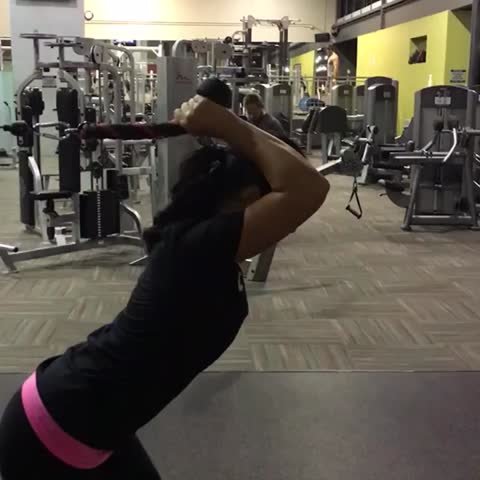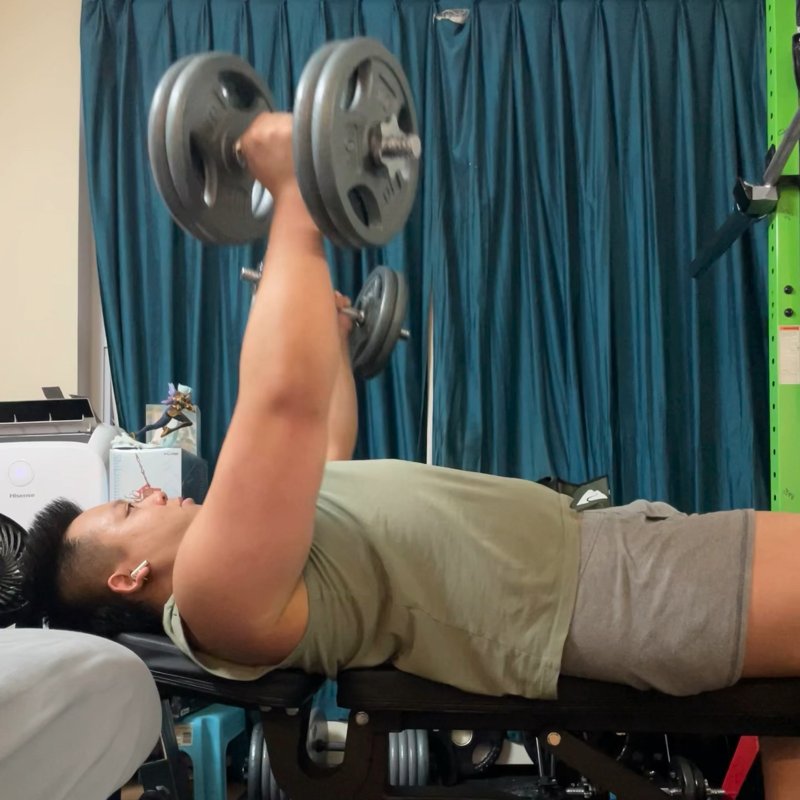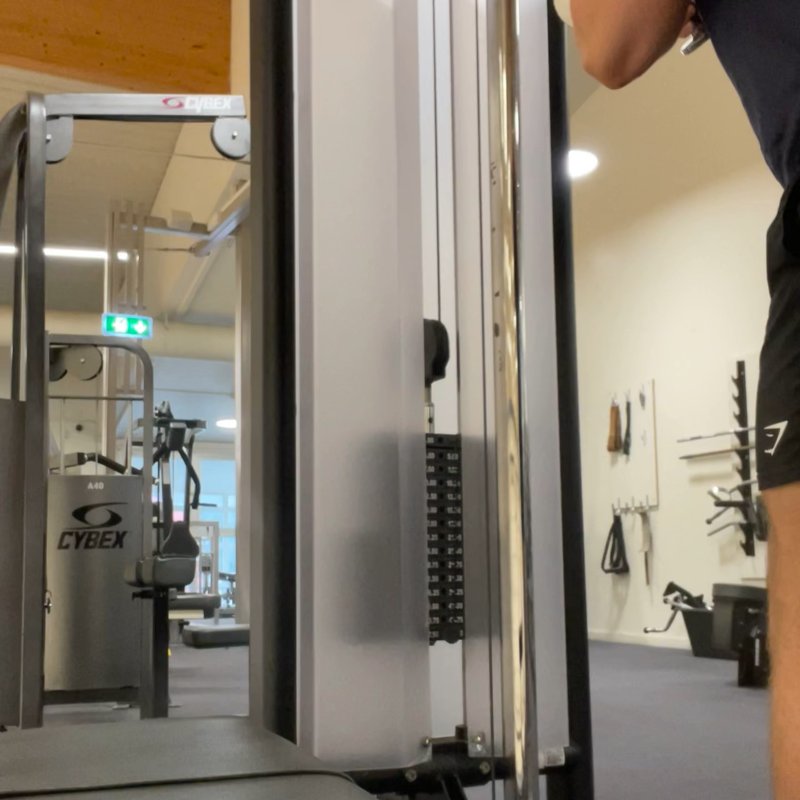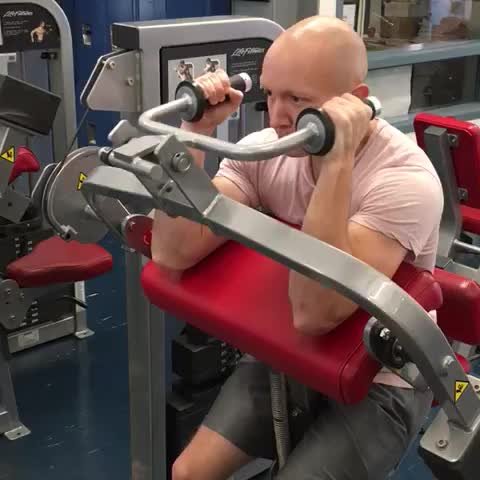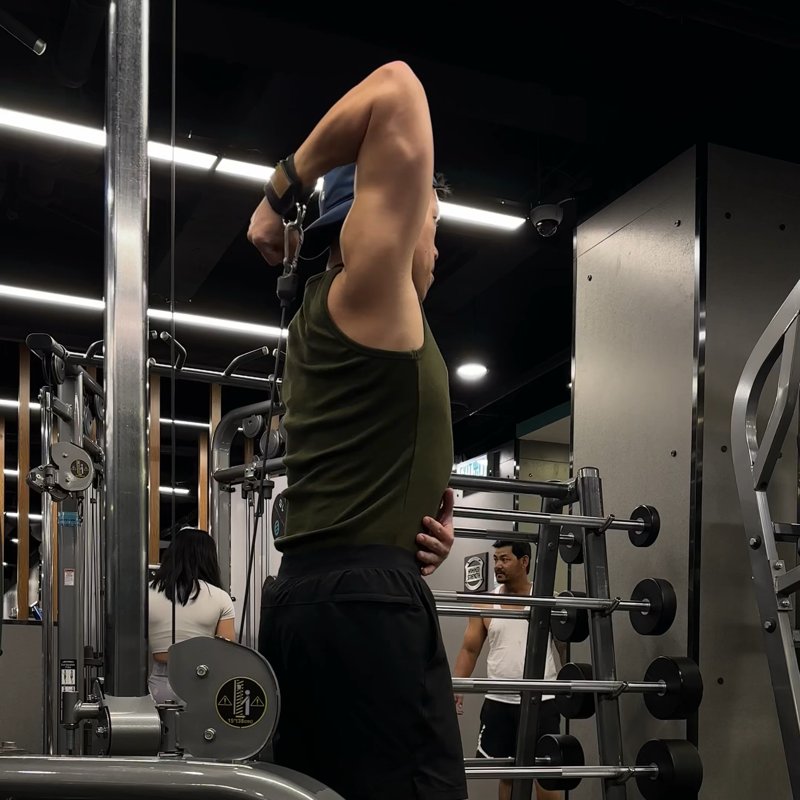Cable Tricep Extension: The Ultimate Guide
The Single Arm Cable Tricep Extension is an isolation exercise that targets the triceps by extending the elbow joint against cable resistance, allowing for unilateral focus and constant tension throughout the movement.
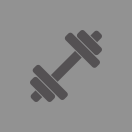
Quick Facts
Key Benefit
Targeted tricep development with unilateral balance
Primary Muscles
Triceps
Secondary Muscles
Abdominals, Forearms, Posterior Deltoids
Equipment
cable machine
Difficulty
Beginner
Type
Strength
In This Guide
Ready to master the Cable Tricep Extension?
Track your progress, see improvements over time, and build strength consistently.
Download GravitusThe Single Arm Cable Tricep Extension is a focused isolation exercise that provides targeted development of the triceps brachii, the three-headed muscle comprising roughly two-thirds of your upper arm. This exercise stands out from other tricep movements by allowing you to work each arm independently, which offers several unique advantages.
Working unilaterally permits you to identify and address strength imbalances between your left and right arms, a common issue that bilateral exercises can mask. This approach ensures balanced development and may help prevent injury arising from muscle asymmetries.
The cable machine provides a key benefit over free weights for this movement: constant tension throughout the entire range of motion. While dumbbells or bands lose tension at certain points in the movement due to gravity or resistance profiles, the cable maintains consistent resistance from start to finish, maximizing muscle fiber recruitment and time under tension.
Additionally, the pulley system allows you to customize the angle of resistance to target different heads of the triceps. By adjusting your body position and the pulley height, you can emphasize the long head, lateral head, or medial head of the triceps to create comprehensive development.
Whether you're a beginner looking to build foundational arm strength or an advanced lifter seeking to refine your physique with detailed tricep development, the Single Arm Cable Tricep Extension provides an effective, adjustable, and joint-friendly approach to training this important muscle group.
Benefits of Single Arm Cable Tricep Extensions
The Single Arm Cable Tricep Extension offers several unique advantages that make it a valuable addition to any arm training program.
Muscle Imbalance Correction
Allows you to identify and address strength disparities between your left and right triceps, promoting balanced development.
Constant Tension
The cable provides consistent resistance throughout the entire range of motion, maximizing muscle fiber recruitment and time under tension.
Joint-Friendly
Allows for natural movement patterns with adjustable angles that can reduce elbow and shoulder stress compared to some barbell variations.
Enhanced Mind-Muscle Connection
Working one arm at a time helps improve your ability to focus on and feel the triceps working, enhancing neural activation.
Versatility
The adjustable cable position enables you to target different heads of the triceps by changing the angle of resistance and body position.
Proper Form & Technique
Setup
- Attach a single handle to a cable pulley set at approximately shoulder height.
- Stand with your side toward the cable machine, feet shoulder-width apart for a stable base.
- Grasp the handle with one hand using a neutral grip (palm facing inward).
- Position yourself so there's tension on the cable even at the starting position.
- Turn your body slightly away from the machine to create space for movement.
- Tuck your elbow close to your ribcage and maintain this position throughout the exercise.
- Keep your wrist neutral (not flexed or extended) and aligned with your forearm.
- Maintain a slight forward lean from the hips with a neutral spine and engaged core.
Movement
- Begin with your elbow bent at approximately 90 degrees, forearm parallel to the floor.
- Keeping your upper arm stationary and elbow fixed at your side, extend your forearm.
- Push through your palm, focusing on contracting your triceps muscle.
- Extend your arm fully without locking out your elbow completely, maintaining slight tension.
- Squeeze your triceps at the point of full extension, holding briefly for maximal contraction.
- Slowly allow your forearm to return to the starting position, controlling the weight throughout.
- Maintain consistent tension in your triceps even at the top of the movement.
- Complete all repetitions with one arm before switching to the other side.
Key Form Tips
Elbow Position
Keep your elbow fixed close to your ribcage throughout the entire movement to properly isolate the triceps.
Core Engagement
Maintain a braced core to prevent unwanted torso rotation or swinging that could reduce triceps activation.
Movement Isolation
Only your forearm should move; avoid letting your upper arm drift forward or backward during the exercise.
Controlled Tempo
Resist using momentum, particularly on the return phase, to maximize time under tension for the triceps.
Full Range of Motion
Allow your arm to flex fully on the return without letting the weight stack touch down between repetitions.
Muscles Worked
Primary Muscles
- triceps: The three-headed muscle on the back of the upper arm consisting of the long head (largest and innermost), lateral head (outer, visible portion), and medial head (deep inner portion), all of which work together during elbow extension to create the pushing movement.
Secondary Muscles
- anconeus: A small muscle near the elbow that assists with elbow extension and stabilization during the movement.
- posterior deltoids: The rear shoulder muscle that provides minor assistance and stabilization during the exercise.
- abdominals: Engage isometrically to stabilize the torso and prevent rotation during the unilateral movement.
- forearms: Activated during gripping and stabilization of the wrist throughout the movement.
Common Mistakes and How to Fix Them
Moving the Upper Arm
Allowing the elbow to drift away from the side of your body, reducing triceps isolation and engagement. Focus on keeping your upper arm stationary and pressed against your ribcage throughout the entire movement. If necessary, use your free hand to lightly touch your working elbow as a reminder to keep it in position, or perform the exercise facing a mirror to monitor your form.
Using Momentum
Swinging or using body movement to assist with the extension phase, reducing triceps activation. Slow down your movement speed, focus on controlled repetitions, and consider slightly reducing the weight if necessary to maintain proper form. Establish a consistent tempo (e.g., 2 seconds to extend, 1-second pause, 3 seconds to return) to eliminate momentum.
Incomplete Range of Motion
Not extending the arm fully or not allowing sufficient flexion during the return phase, limiting muscle development. Ensure you achieve near-complete extension (without locking out the elbow) at the end of each repetition and allow the arm to flex to approximately 90-110 degrees on the return. Focus on feeling the full contraction and stretch in your triceps rather than simply moving the weight.
Wrist Flexion/Extension
Allowing the wrist to bend rather than maintaining a straight line with the forearm, which can reduce force transfer and potentially strain the wrist. Keep your wrist neutral and firm throughout the movement, imagining your hand as a direct extension of your forearm. If wrist position is a persistent issue, consider using a wrist wrap for additional support until proper form becomes habitual.
Shoulder Substitution
Allowing the shoulder to extend or rotate to assist with the movement rather than isolating the triceps. Focus on initiating the movement entirely from the elbow joint while keeping the shoulder joint static. Practice the movement with a very light weight initially to develop proper motor patterns, and consider performing the exercise with your back against a wall to eliminate unwanted shoulder movement.
Single Arm Cable Tricep Extension Variations
Position Variations
-

Overhead Single-Arm Extension
Performed with the pulley set above head height, emphasizing the long head of the triceps with a downward pulling motion.
-

Low Pulley Extension
Using a low pulley position and pulling upward, creating a different angle of resistance that can emphasize the lateral and medial heads.
-
Kneeling Extension
Performed in a kneeling position, which can help improve stability and isolation by eliminating lower body involvement.
-

Seated Extension
Done while seated on a bench, providing back support and potentially enabling greater focus on isolation and form.
Technical Variations
-

Rope Handle Extension
Using a rope attachment instead of a handle allows for a more natural rotation of the wrist at the end of the movement.
-

Supinated Extension
Performed with the palm facing upward, placing greater emphasis on the medial head of the triceps.
-

Cross-Body Extension
Pulling the cable across the body rather than straight back, creating a different angle of resistance for varied muscle fiber recruitment.
-

Horizontal Extension
Performed with the upper arm parallel to the floor and extending from this position, increasing the challenge at peak contraction.
Frequently Asked Questions
The appropriate weight depends on your experience level, current strength, and training goals. As a general guideline, select a weight that allows you to complete your target repetitions with proper form while still finding the last 2-3 reps challenging. For beginners, this typically means 12-15 repetitions with a weight that feels moderately difficult. Intermediate lifters might work in the 8-12 repetition range with a more challenging weight. Advanced lifters might occasionally use heavier weights for 6-8 repetitions to emphasize strength development. The key indicator is form - if you're unable to keep your elbow fixed at your side, maintain a controlled tempo, or achieve a full range of motion, the weight is too heavy. The triceps respond well to various rep ranges, but tend to develop optimally with moderate to higher repetitions (8-15) with perfect form rather than maximum loads with compromised technique. Unlike compound movements where progressive overload primarily comes through weight increases, for isolation exercises like this, progression can effectively come through increased time under tension, improved mind-muscle connection, and perfect form rather than simply adding weight.
Each implements offers unique advantages rather than one being universally "better." Cable extensions provide consistent tension throughout the range of motion, which is a significant benefit over free weights where resistance varies based on the leverage and gravity. This constant tension can lead to greater time under tension and potentially more muscle fiber recruitment. Cables also allow for more versatility in angles and positioning, enabling you to target specific heads of the triceps by adjusting the pulley height. Dumbbells offer the benefit of greater stabilization requirements and can be more accessible when gym equipment is limited. They also allow for natural movement patterns that may feel more comfortable for some individuals. Machine variations (like tricep pushdowns) provide a fixed movement path that can be beneficial for beginners learning proper form or those with certain joint issues requiring extra stability. For optimal triceps development, consider incorporating various implements rather than exclusively using one type. Many successful programs rotate between cable, dumbbell, and machine variations across different training sessions or phases to provide novel stimulus and target the muscle from different angles.
Both attachments are effective, with each offering distinct advantages that may make one more suitable depending on your specific goals and preferences. The straight handle (or D-handle) provides a fixed grip position that can help maintain consistent form and may allow you to use slightly heavier weights. It's often preferred by beginners as it simplifies the movement and can help establish proper elbow positioning. The rope attachment allows for natural rotation of the wrist at the end range of the extension, which some research suggests may increase triceps activation, particularly in the medial head. The rope also permits a slight outward flare of the hands at full extension, potentially allowing for a stronger peak contraction. Some lifters find the rope more comfortable on the wrists and elbows as it allows for more individualized movement patterns. Rather than choosing exclusively between them, many successful trainees incorporate both attachment types in their program - either by alternating between sessions or using different attachments for different tricep extension variations within the same workout. This approach provides varied stimulus to the muscle and may help prevent overuse issues from repetitive identical movement patterns.
Training frequency for triceps depends on your overall program structure, recovery capacity, and training goals. For most recreational lifters following a body-part split routine, directly training triceps 2-3 times per week provides sufficient stimulus for growth while allowing adequate recovery. For those following an upper/lower or push/pull/legs split, triceps are typically trained during each "push" or "upper body" session, which usually occurs 2 times per week. Remember that triceps are also heavily involved in compound pressing movements like bench press, shoulder press, and dips. Account for this indirect volume when planning your direct tricep work. If triceps are a prioritized area for development, you might consider including Single Arm Cable Tricep Extensions in 2-3 weekly sessions using varied rep ranges and intensities (e.g., heavier with lower reps in one session, lighter with higher reps in another). For maintenance, even once-weekly dedicated tricep training can be effective provided you're performing compound pressing movements regularly. Pay attention to recovery signals - if you experience persistent soreness, decreased performance, or elbow discomfort, you may need to reduce frequency temporarily. Advanced lifters might benefit from periodizing tricep training across a training cycle, with periods of higher frequency (3-4 times weekly) during specialization phases followed by lower frequency maintenance periods.
Track your progress with Gravitus
Download Gravitus to log your workouts, track your progress, and join a community of fitness enthusiasts.

Helpful Resources
One Rep Max Calculator
Find your one rep max for any exercise without maximal testing. Essential for developing effective strength training programs.
Calculate 1RMWorkout Programs
Follow structured workout programs created by fitness professionals to maximize your strength and muscle gains.
View Programs
